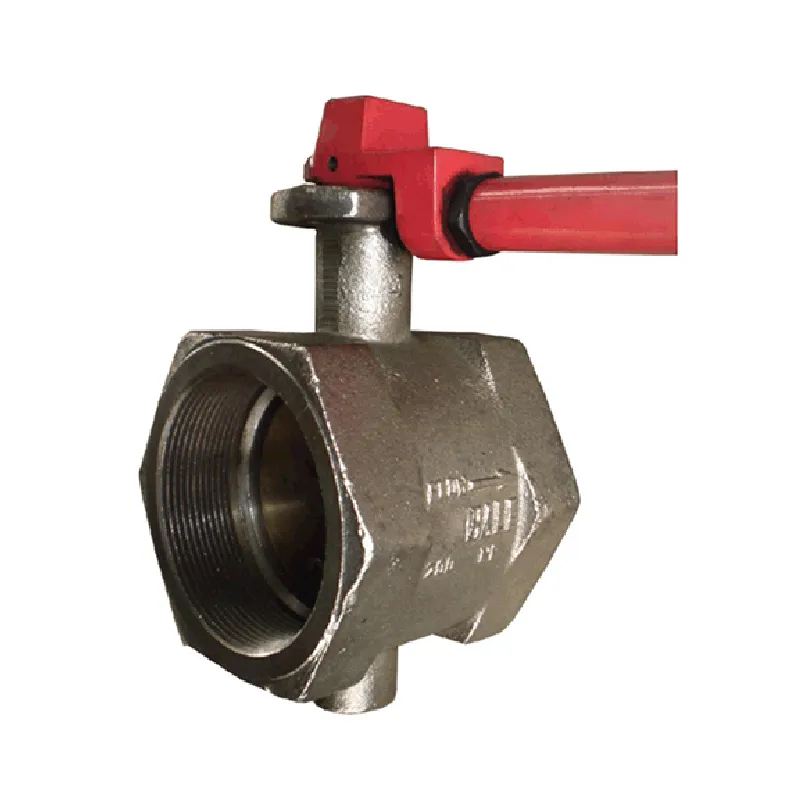Dec . 10, 2024 18:28 Back to list
Wafer Style Dual Plate Check Valve for Efficient Fluid Control
Understanding Dual Plate Check Valve – Wafer Type
The dual plate check valve, particularly the wafer type, is an essential component in various piping systems used across different industries. Engineered for optimal performance, this type of check valve ensures unidirectional flow, preventing backflow and protecting system integrity.
What is a Dual Plate Check Valve?
A dual plate check valve consists of two plates (or discs) that pivot about a hinge. When fluid flows in the desired direction, the plates open, allowing flow to pass through. Conversely, if the flow reverses, the plates close quickly, preventing backflow. The unique design of the dual plate allows for quick closure, minimizing the risk of water hammer, which can lead to pressure surges and potential damage in the pipeline.
Wafer Type Design
The wafer type design refers to the valve's shape and installation method. Unlike other check valve types, such as flanged or threaded designs, wafer type check valves are compact and lightweight. They are sandwiched between two flanges of a pipeline. This design is beneficial in applications where space is limited and wherever weight reduction is paramount.
The wafer style offers several advantages, including
1. Space Efficiency The compact form means less space required in the system layout, which is crucial for tight installations.
2. Weight Reduction The lightweight design eases handling and installation, reducing the overall stress on the piping network.
3. Cost-Effectiveness With fewer materials and a simpler design, wafer type check valves can be more economical than their larger counterparts.
4. Ease of Installation Designed to fit between standard flanges, installation processes are straightforward, reducing labor time and costs.
Applications
Dual plate wafer check valves are commonly used in various applications, including
dual plate check valve wafer type

- Water & Wastewater Management These valves are crucial in controlling flow direction in treatment plants, ensuring that backflow does not contaminate clean water.
- Hydraulic Systems Their quick response prevents backflow that could lead to pump damage or system inefficiencies.
- Process Industries In industries such as chemical manufacturing, food processing, and oil and gas, these valves help maintain the safety and quality of transported fluids.
- HVAC Systems In heating and cooling systems, dual plate check valves help maintain system efficiency and prevent backflow that could lead to temperature inconsistencies.
Benefits of Dual Plate Check Valves
The advantages of using dual plate check valves extend beyond their basic functionality. Some of the key benefits include
- Reduced Maintenance The robust design ensures long operational life with minimal maintenance requirements, leading to lower lifecycle costs.
- High Flow Capacity The streamlined design allows for a high flow rate, minimally restricting the movement of fluids through the system.
- Reliability With a design optimized to respond quickly to changes in flow direction, dual plate check valves enhance the reliability of the entire system.
- Versatility Available in various materials such as stainless steel, cast iron, and bronze, these valves can be adapted to suit different fluid types and environmental conditions.
Conclusion
In summary, the dual plate check valve, particularly the wafer type, presents an efficient and reliable solution for controlling fluid flow in a multitude of applications. Its space-saving design, lightweight construction, and quick action help to enhance system performance while ensuring safety and reliability. As industries continue to evolve, the demand for such efficient and effective flow control solutions will undoubtedly grow, solidifying the dual plate wafer type check valve's role as an indispensable component in modern piping systems. Whether you are involved in water management, chemical processing, or HVAC systems, understanding and implementing this technology can lead to significant benefits in system integrity and operational efficiency.
Share
-
Advanced Technology in Wire and Cable FactoryNewsAug.19,2025
-
Applications of Ball Check Valve in Water Treatment PlantsNewsAug.19,2025
-
How Osy Gate Valve Ensures Leak - Tight SealingNewsAug.19,2025
-
Selection Criteria for Wafer Type Butterfly ValveNewsAug.19,2025
-
Threaded Ball Valve Pressure RatingsNewsAug.19,2025
-
Y Strainer PN16 Cost - Effectiveness AnalysisNewsAug.19,2025


